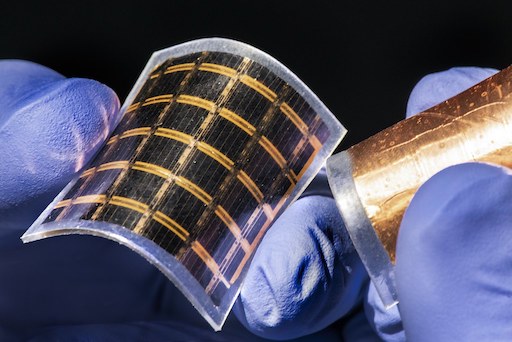
Solar photovoltaic cells (the individual units that form a solar panel) are made of semiconductors that are capable of converting sunlight to electrical energy. But even the best solar semiconductors only capture a fraction of the light that strikes them. Designing new solar cells that convert a larger fraction of incoming sunlight into electrical energy is one of the most active areas of solar research.
Today’s typical silicon solar panels operate at around 22 percent efficiency, but a new crystalline material called perovskite could soon raise the solar efficiency bar much further.
Perovskite solar cells are not just achieving new efficiency records, scientists are figuring out new ways to make the cells more sustainable by using earth-abundant materials. (Perovskite refers to any compound that shares the same crystal structure as the perovskite mineral, aka calcium titanate.)
Now, a team of engineers claims to have created flexible perovskite solar cells with the highest indoor light efficiency.
These exciting changes in perovskite technology may not only increase the efficiency of solar cells upwards of 40 percent, but could also help reduce the price, enabling greater clean, green energy applications for a brighter future.
Learn more @ New Atlas

Scientists have predicted that by 2040, almost 50 percent of the world’s electric power will be used in computing. Remarkably,…

This past summer was both the hottest one on record and predicted to be the coolest one in our future.…

July 2023 was the hottest month ever recorded with temperatures shattered around the globe. Hundreds of millions of people across…